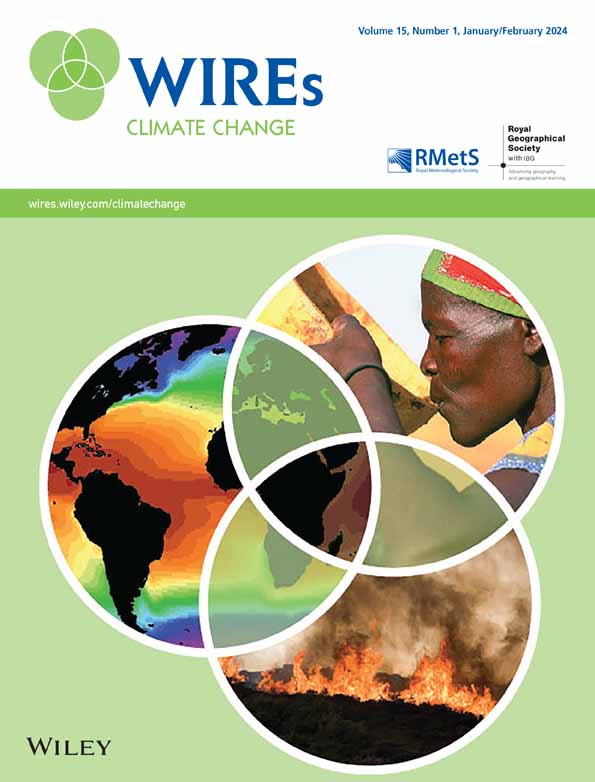Scrutinizing tree‐ring parameters for Holocene climate reconstructions
IF 10.3
1区 环境科学与生态学
Q1 ENVIRONMENTAL STUDIES
引用次数: 5
Abstract
Independent evidence from Europe and Asia shows that tree‐ring stable isotopes can reveal persistent long‐term hydroclimate trends that are generally not captured by more traditional dendroclimatic studies using tree‐ring width or density. Since the recently observed long‐term discrepancy between flatter “growth‐dependent” and more varying “growth‐independent” climate proxy data is unrelated to possible biases of statistical age‐trend removal, I call for a conceptual rethinking of the predictive power of different tree‐ring parameters for reconstructing climate variability on interannual to multimillennial timescales. I describe why traditional “growth‐dependent” tree‐ring width and wood density measurements usually lack abiotic signals on ultra‐long timescales, whereas “growth‐independent” carbon and oxygen isotopic ratios from tree‐ring cellulose can capture environmental variation well beyond the segment length of individual tree‐ring samples. Caution is therefore advised when information from diverse tree‐ring parameters is combined in multiproxy reconstructions of Holocene climate that aim to reflect the full range of interannual to multimillennial variability. This Perspective not only emphasizes the paleoclimatic value that can be obtained from tree‐ring stable isotopes in living and relict wood. It also stresses the need for developing new high‐resolution isotopic datasets from different species and regions in both hemispheres to supplement the existing tree‐ring record.全新世气候重建的树木年轮参数筛选
来自欧洲和亚洲的独立证据表明,树木年轮稳定同位素可以揭示持续的长期水文气候趋势,而传统的树木年轮宽度或密度研究通常无法捕捉到这些趋势。由于最近观测到的较平的“生长依赖”和更变化的“生长独立”气候代理数据之间的长期差异与统计年龄趋势去除的可能偏差无关,我呼吁对不同树轮参数在年际到千年时间尺度上重建气候变率的预测能力进行概念上的重新思考。我描述了为什么传统的“生长依赖”的树木年轮宽度和木材密度测量通常在超长时间尺度上缺乏非生物信号,而“生长独立”的树木年轮纤维素碳和氧同位素比值可以捕捉到远远超出单个树木年轮样本片段长度的环境变化。因此,当将来自不同树木年轮参数的信息结合在全新世气候的多代理重建中,以反映年际到千年变化的全部范围时,建议谨慎。这一观点不仅强调了从活木和残木的树轮稳定同位素中获得的古气候价值。它还强调需要开发来自两个半球不同物种和地区的新的高分辨率同位素数据集,以补充现有的树木年轮记录。
本文章由计算机程序翻译,如有差异,请以英文原文为准。
求助全文
约1分钟内获得全文
求助全文
来源期刊

Wiley Interdisciplinary Reviews: Climate Change
METEOROLOGY & ATMOSPHERIC SCIENCES-
CiteScore
20.00
自引率
2.20%
发文量
58
审稿时长
>12 weeks
期刊介绍:
WIREs Climate Change serves as a distinctive platform for delving into current and emerging knowledge across various disciplines contributing to the understanding of climate change. This includes environmental history, humanities, physical and life sciences, social sciences, engineering, and economics. Developed in association with the Royal Meteorological Society and the Royal Geographical Society (with IBG) in the UK, this publication acts as an encyclopedic reference for climate change scholarship and research, offering a forum to explore diverse perspectives on how climate change is comprehended, analyzed, and contested globally.
 求助内容:
求助内容: 应助结果提醒方式:
应助结果提醒方式:


